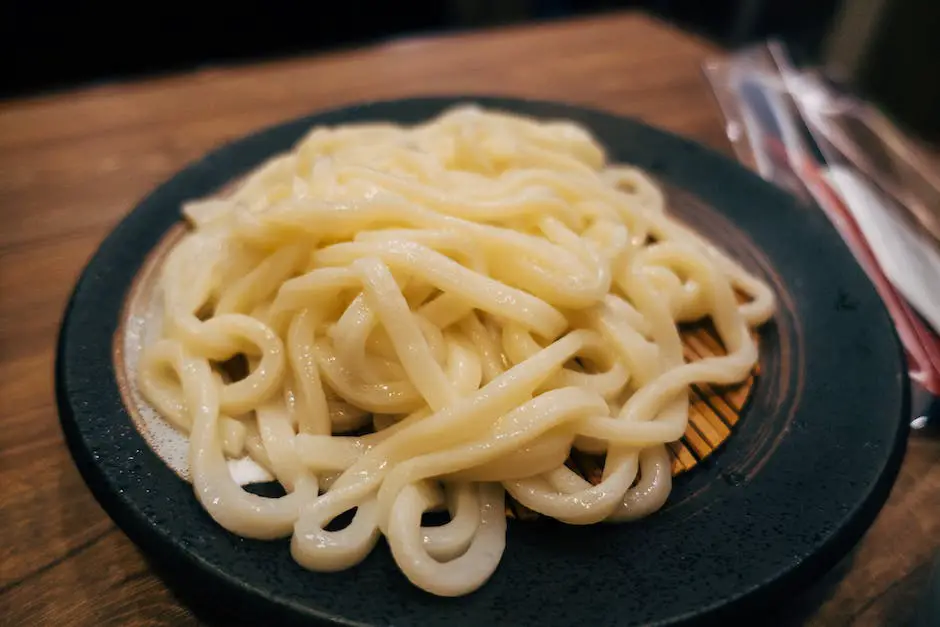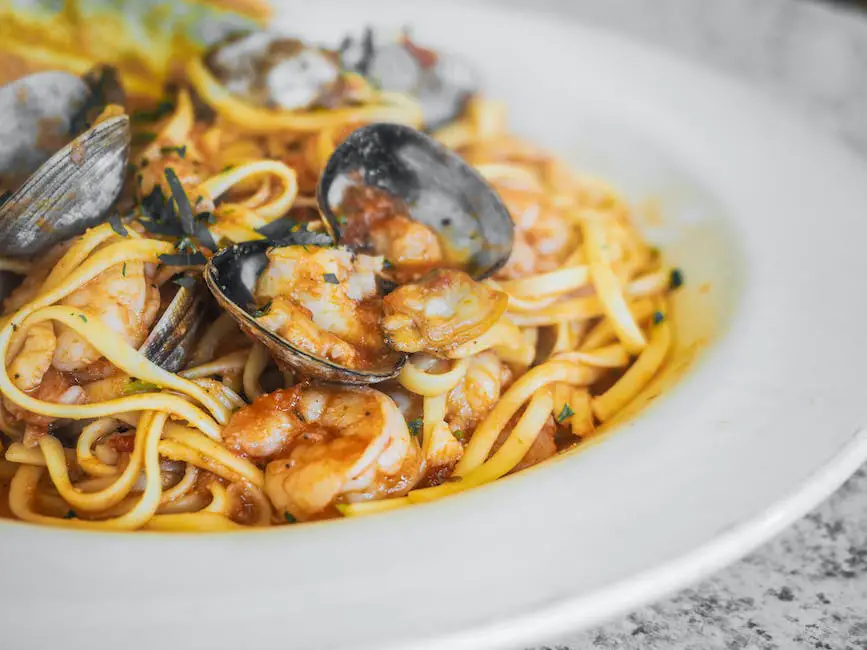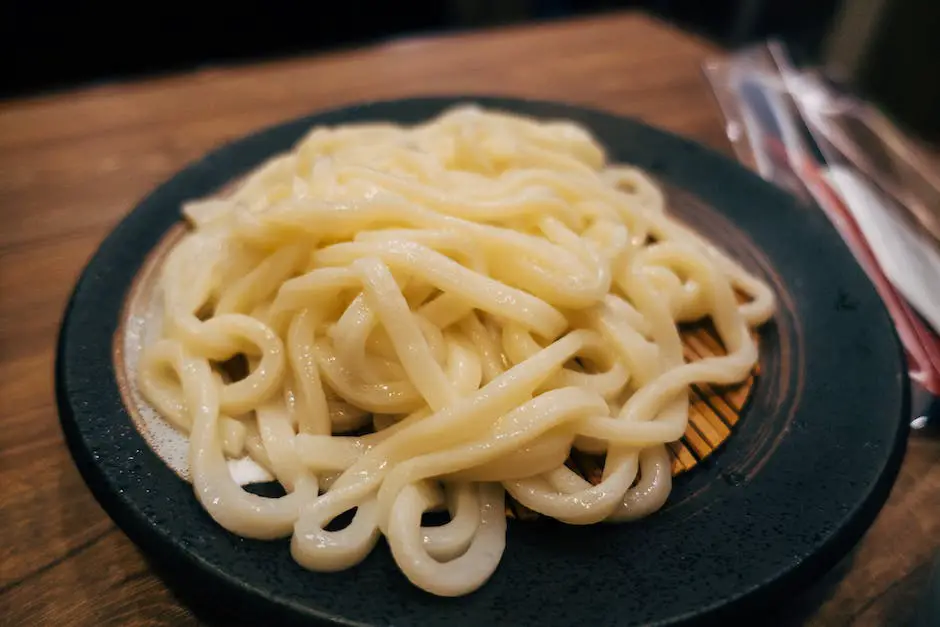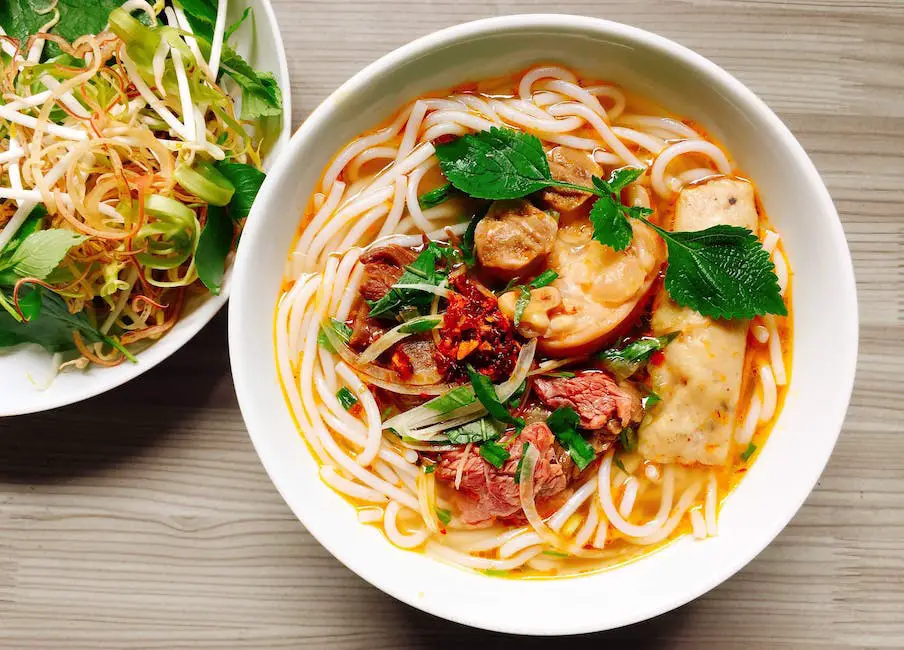In the gastronomic world, the canvas of our palates often craves for taste from various nooks and corners of the globe. Udon noodles, borne out of the culinary traditions of Japan, have made their way into homes and hearts worldwide. This doughy, sumptuous noodle variety seems straightforward, but bow beneath its skin and it opens up a myriad of questions for the quintessential conscious eater: What is it made of? Is there gluten in it? And if so, is there a way around it for those aiming to remain gluten-free? This exposition provides a comprehensive answer not only to these questions, but also offers an insight into gluten, its implications on the diet, and alternatives to udon noodles for those on the gluten-free bandwagon.
Understanding Udon Noodles
Understanding Udon Noodles: An Overview
Udon noodles originated from Japan and are a staple in the Japanese culinary scene. These noodles are thick, chewy, and white in color, easily identifiable by their characteristic thickness and texture. The main ingredients that go into making udon noodles are water, salt, and wheat flour.
Udon Noodles: Key Ingredients
The primary ingredient in udon noodles is wheat flour. Other ingredients used in its preparation include salt and water. The dough for these noodles is often kneaded thoroughly, then rolled out and cut into thick strips. This process results in the chewy texture that udon noodles are known for.
The use of wheat flour makes these noodles rich in carbohydrates. However, because the basic ingredient is wheat, it also contains gluten. Gluten is a type of protein found in grains like wheat, barley, and rye. It’s this ingredient that gives bread and pasta their elastic, chewy texture – a characteristic also found in udon noodles.
Are Udon Noodles Gluten-Free?
Given the components used in preparing udon noodles, the answer to whether or not udon noodles are gluten-free is, unfortunately, a definitive “no”. The wheat flour that contributes to executing their unique texture also brings gluten to the table. Consuming udon noodles can trigger reactions like bloating, diarrhea, and stomach cramps in individuals with gluten sensitivity or celiac disease.
For such individuals, foods containing wheat flour – such as udon noodles – should be avoided. Instead, exploring alternative gluten-free noodle options made of rice, corn, quinoa, or other gluten-free grains is recommended. It’s important to carefully read the packaging when buying any kind of noodles, as sometimes gluten can be hidden in places you wouldn’t expect.
The Gluten Content in Udon Noodles
Udon noodles, unfortunately, are not suitable for those following a strict gluten-free diet due to their wheat content. However, they do contain notable nutritional value. For example, they’re low in fat yet provide beneficial nutrients such as protein and fiber. So, while udon noodles can contribute to a balanced diet for those without a gluten sensitivity, individuals with celiac disease or a gluten intolerance must avoid them.
Luckily, for those looking to incorporate udon-like noodles into their gluten-free diet, certain specialty stores and supermarkets offer gluten-free alternatives. These variants use non-gluten ingredients in place of wheat flour. However, it is crucial to scrutinize the labels to confirm that they are genuinely free of gluten. Moreover, to further avoid potential cross-contamination, those with celiac disease or severe gluten sensitivity should ensure the noodles were manufactured in a facility that also guarantees a gluten-free environment.

Gluten Explained
A Closer Look at Gluten
Gluten refers to a protein primarily found in wheat, barley, and rye. It plays a vital role in food preparation as it acts like a bonding agent, holding food together and giving it structure. Gluten is found in various foods, some unexpected, such as certain kinds of ice cream and soy sauce. The dietary role of gluten is significant, particularly in bread production where it imparts a pleasing, fluffy texture. Gluten is also key in the production of seitan, a protein-rich product commonly used as a meat substitute.
Despite its ubiquity, gluten is harmful to those with certain health conditions. For instance, individuals with celiac disease or a wheat allergy experience an immune response that harms their small intestine when gluten is consumed. Others may have a non-celiac gluten sensitivity, causing uncomfortable but non-threatening reactions when they ingest gluten. Therefore, these individuals must maintain a gluten-free diet to control their symptoms.
Gluten in Noodles
In evaluating whether udon noodles contain gluten, one must consider the ingredients used in making these noodles. Udon noodles, a staple of Japanese cuisine, are typically made from wheat flour, which naturally contains gluten. The wheat flour is mixed with salt and water to form a dough, which is then kneaded, rolled, and cut into thick strips. The resultant noodles are firm and chewy, qualities that are partly owed to the presence of gluten in the wheat flour.
Therefore, traditional udon noodles usually contain gluten due to the wheat flour employed in their production.
Gluten-free Udon Noodles
While conventional udon noodles are not feasible for those on a gluten-free dietary plan, there are alternatives available. A number of food companies now craft gluten-free versions of udon noodles, utilizing alternative substances such as rice flour, potato starch, or cornstarch. This permits people with a gluten intolerance, or those opting to remove gluten from their diet to enjoy the distinct taste and texture of udon noodles without any adverse reactions.
Yet, it’s important to stay cautious when purchasing gluten-free udon noodles or any other gluten-free product. Be sure to thoroughly review the product labels to confirm they have a certified gluten-free label. Also, consider the possibility of cross contamination during the production phase if the product is manufactured in a facility that also handles wheat and other grains containing gluten.

Is there gluten in Udon?
Diving deeper into Udon Noodles
Udon noodles are thick, Japanese-style noodles that are an integral part of countless dishes, the most popular being udon soup – a dish cherished for its uncomplicated yet robust mix of flavors. The primary component in udon noodles is wheat flour, which is key to the noodle’s texture and taste. The specific variety of wheat flour used results in a noodle that gives a pleasantly thick and chewy sensation, setting it apart from other Asian noodles such as ramen or soba.
The Presence of Gluten in Wheat Flour
Wheat flour, being the dominant ingredient in udon noodles, naturally contains a protein called gluten. Gluten helps foods maintain their shape by acting as a sticky substance that holds food together. It can be found in many types of foods, even ones that would not usually be expected to contain it. People with Celiac disease, wheat allergy, non-celiac gluten sensitivity, and other similar conditions may react to the presence of gluten, which necessitates the avoidance of any food containing this protein.
Udon Noodles and Gluten Content
Owing to the main ingredient of wheat flour, udon noodles are, by default, not gluten-free. Virtually all traditional udon noodles will contain gluten. This is important to note for people who have gluten allergies or sensitivities, as consuming udon noodles may trigger their condition.
Gluten Variability in Udon Noodles
While traditional udon noodles are not gluten-free, there are certain variations and specific brands that cater to those with a need or preference for gluten-free options. As gluten-free awareness and dietary needs have increased globally, many manufacturers have begun producing gluten-free versions of popular foods, including udon noodles. These gluten-free udon noodles substitute wheat flour with other gluten-free flours like rice flour, tapioca flour or a blend of several flours. However, it should be noted that the texture of gluten-free udon might not perfectly mimic that of traditional udon due to the lack of gluten.
Preparation Method and Gluten Content
Furthermore, the method of preparation could potentially introduce gluten into the dish even if gluten-free udon noodles are used. This could happen if ingredients that contain gluten like soy sauce or certain broths are included in the dish. Hence, if the goal is to avoid gluten, it is crucial to pay attention to all components of the dish, not just the noodles themselves.
When it comes to udon noodles, a popular staple in Japanese cuisine, it’s important to note that they typically contain gluten. This is because wheat flour, the main ingredient in these thick and chewy noodles, is a known source of gluten. However, it’s not impossible to find gluten-free versions of udon noodles if you’re on a specific diet that restricts gluten intake. But it’s essential to be aware that the preparation process or other ingredients used in the dish could introduce gluten into the meal.

Alternatives for Gluten-Free Udon Noodles
Delving Deeper into Udon Noodles and Gluten
Udon noodles are thick, dense, and loved in many Japanese dishes. They’re traditionally made using wheat flour, water, and salt. Wheat flour, unfortunately, is a major producer of gluten – a protein commonly found in wheat, barley, and rye. Those who have celiac disease, gluten sensitivity, or a wheat allergy often strive to avoid this protein in their dietary regime. As such, traditional udon noodles, due to their wheat content, do contain gluten, and are thereby not suitable for individuals following a strict gluten-free diet.
Gluten-Free Udon Noodles
The good news is that as awareness about gluten intolerance and celiac disease grows, so have the options for gluten-free products. There are food manufacturing companies that have responded to this dietary need by creating gluten-free versions of udon noodles. These noodles replace wheat with a blend of different gluten-free flours, such as rice flour, corn flour, or potato starch.
However, it’s critical to ensure that these gluten-free products are not cross-contaminated with gluten during production or packaging. Therefore, when purchasing gluten-free udon noodles, look for ones that are specifically labeled as gluten-free and from manufacturers that indicate gluten-free processing facilities.
Alternatives to Udon Noodles
If gluten-free udon noodles are not readily available, there are other similar noodle substitutes that are naturally gluten-free. Here are a few examples:
- Rice Noodles: Available in thin and thick varieties, similar to udon, rice noodles are made from rice flour and are inherently gluten-free.
- Sobu (buckwheat) noodles: Despite their misleading name, buckwheat is not a variety of wheat and is generally safe for gluten-intolerant people. However, some soba noodles can contain a blend of wheat flour and buckwheat flour, so be sure to check the label.
Influence of Cooking Method
Just having gluten-free udon noodles is not enough to confirm a meal that is safe for those avoiding gluten. It’s also essential to consider the cooking method and other ingredients used. For instance, using a soy sauce that contains wheat will introduce gluten. Therefore, use tamari or a specifically labeled gluten-free soy sauce instead.
Final Verdict
To summarize the findings, traditional udon noodles are not gluten-free as they contain wheat. However, for those inclined or required to follow a gluten-free diet, there are alternatives available that cater to your dietary needs. You can opt for gluten-free udon noodles or consider substituting with rice noodles. It’s crucial to check product labels for ingredients and understand their manufacturing process. It’s equally important to consider the method of preparation and the additional ingredients being used when consuming dishes made from these noodles.

Navigating a Gluten-Free Diet
Insights on Gluten in Our Diets
Gluten is a type of protein that is commonly found in various grains such as wheat, barley, and rye. This protein plays a crucial role in maintaining the structure of food, acting like a bonding agent. Nevertheless, for some individuals, the consumption of gluten could potentially pose health problems. Conditions like Celiac disease, non-celiac gluten sensitivity, and wheat allergy necessitate a gluten-free diet in order to effectively manage and mitigate their associated symptoms.
Are Udon Noodles Gluten-Free?
Udon noodles, typical in Japanese cuisine, are thick, chewy wheat noodles. Given that wheat is one of the main gluten-containing grains, udon noodles are traditionally not gluten-free. They can cause adverse reactions in those with gluten-related disorders. Therefore, if you’re trying to adhere to a strict gluten-free diet, conventional udon noodles should be avoided.
Alternatives to Traditional Udon Noodles
Fortunately, for noodle lovers adhering to gluten-free diets, various alternatives to traditional udon noodles are available. Noodles made from rice, corn, quinoa, or certain other gluten-free grains can serve as suitable alternatives. Some manufacturers produce gluten-free versions of udon noodles using these grains, but always ensure to carefully read labels or consult the manufacturer if you’re unsure.
Navigating a Gluten-Free Diet and Udon Noodles
To successfully navigate a gluten-free diet, understanding food labels and ingredients is crucial. Foods that contain wheat, barley, rye, malt, and brewer’s yeast typically contain gluten and should be avoided.
Replacing gluten-containing foods with naturally gluten-free foods like fruits, vegetables, lean meats, fish, eggs, and dairy is a healthy way to follow a gluten-free diet. Foods that are processed to be gluten-free, such as gluten-free bread or pasta, should only be a small part of your diet.
When it comes to udon noodles, the key aspect to consider, as with all foods, is the ingredients list. Traditional udon noodles are made from wheat and are therefore not suitable for a gluten-free diet. However, alternatives made from rice or other gluten-free grains can be consumed, provided they have been processed in a facility that does not cross-contaminate with gluten-containing grains.
Note that gluten-free does not automatically mean healthier, as some gluten-free products may be high in sugar and fats. So, it is essential to maintain a balanced diet, scrutinize ingredient lists, and stay informed about possible sources of gluten.

The perpetual pursuit towards healthier and more inclusive options in the current era means no one should have to abandon their love for a particular cuisine due to dietary restrictions. Thankfully, with the presence of gluten-free udon noodle alternatives, the craving for the comfort of Japanese cuisine can still be satiated. The road towards a gluten-free diet may initially seem uphill, but with careful navigation, it can lead towards a wholesome and balanced lifestyle. Armed now with this knowledge, it’s purely up to the individual to choose between traditional wheat-based udon noodles and their gluten-free variants, thereby making informed and purposeful decisions regarding their health and dietary requirements.


